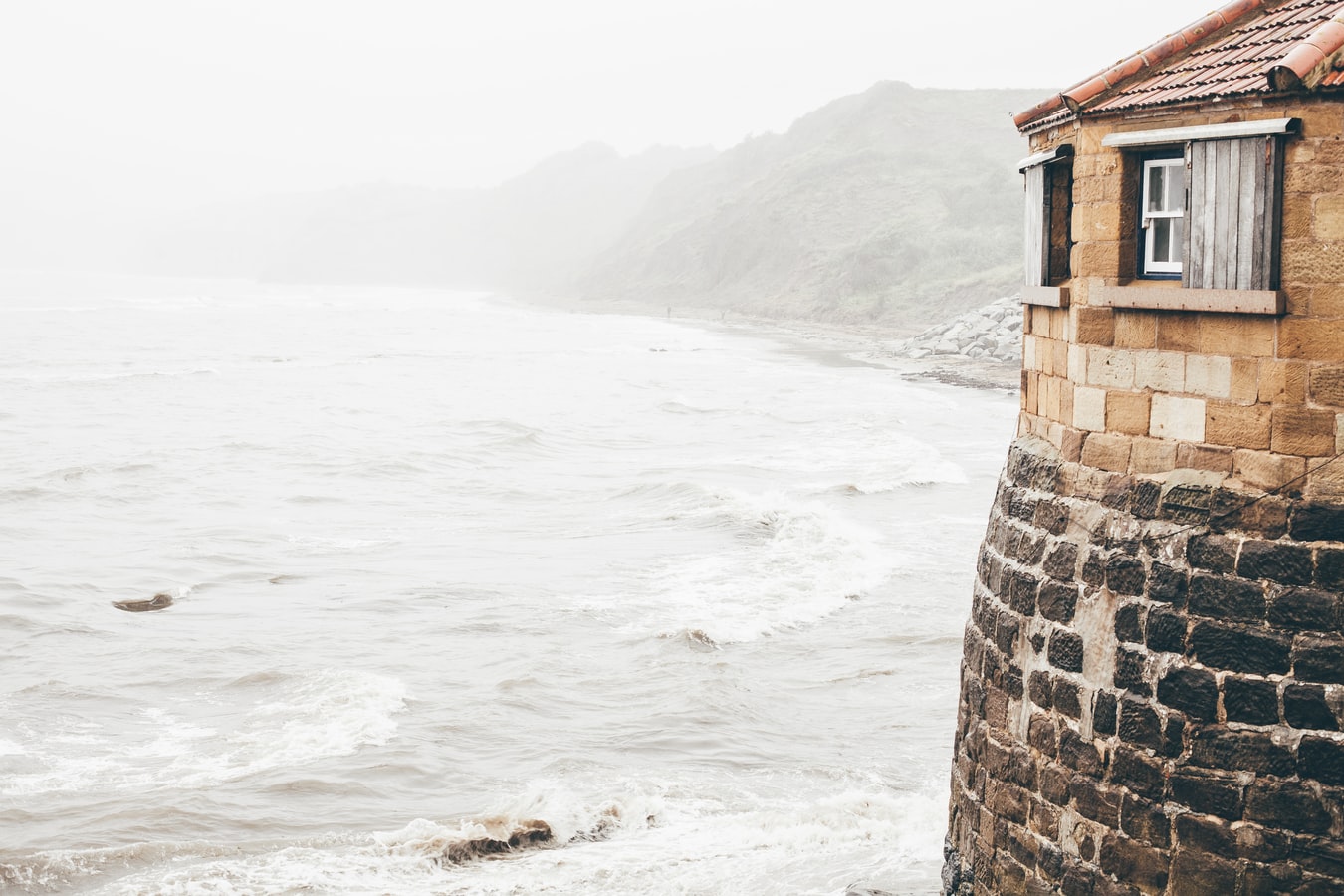
If you're an aspiring long-distance hiker, chances are you've heard of the Coast to Coast walk. It is without a doubt one of the UK's most popular long-distance walks; an epic journey across England from St Bees to Robin Hood's Bay.
The Coast to Coast walk is an iconic path that will take you across three National Parks (Lake District, Yorkshire Dales, and North York Moors). You'll cover a wide variety of terrain and see some of the best scenery England has to offer. It is, however, a tough trek and shouldn't be undertaken lightly. You'll need to know what to take, what to expect, how to prepare and where to stay.
This complete coast to coast guide will give you all the information you need to go on your own Coast to Coast adventure. Let's get cracking!
The route as we know it today was first mapped out by fell-walking legend Alfred Wainwright in 1973, when he had the idea to walk across England. Wainwright illustrated and published a guide book to his route, which is still in print today and carried in many a Coast to Coaster's rucksack.
Alfred Wainwright encouraged people to use his hike as an inspiration to create their own variations. Paradoxically, most people choose to follow in his footsteps and walk his original route, though it has been amended and updated over the years to avoid private land and busy roads.
Wainwright's Coast to Coast walk is 192-miles long, starts at St Bees on the Cumbrian coast and ends at the seaside town of Robin Hood's Bay in North Yorkshire. Although you'll be traversing England, you will only pass through two counties; Cumbria and the vast expanse of Yorkshire.
You'll adventure through the Lake District, Yorkshire Dales and North York Moors National Parks. You'll climb mountains, walk through fields, cross rolling moorland, pass attractive villages along the route, explore the remnants of Yorkshire's mining past having trundled from the Irish Sea to the North Sea. What's not to love?
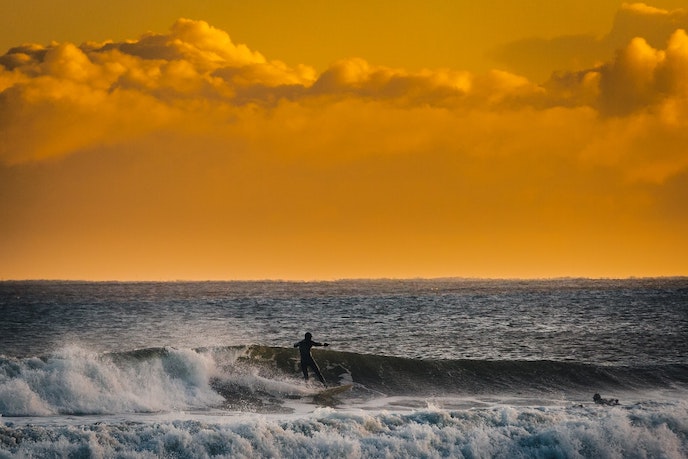
Because it's so popular and you've seen Julia Bradbury walk it on television, film crew in tow, it's tempting to think that the Coast to Coast walk is easy. Don't be fooled. It's a tough old trek and should not be underestimated. Some sections are high and exposed and navigation isn't always straightforward. Add to this the unpredictability of the British weather and it's easy to get caught out.
When the cloud comes down over the hills, visibility can be poor. You'll need to be confident in your ability to navigate or bring a mate who knows a thing or two about contours and back bearings. You will face some steep climbs and descents along the way and risk losing your boots in some notoriously boggy sections. Barefoot is all the rage these days...
It's not all tough going though, you'll also find quintessential England with gentle fields, easy tracks and quiet roads. Just be warned - Wainwright's Coast to Coast walk is not a beginner's hike. If you're new to long-distance walking, cut your teeth on an easier path first.
There's also the risk that the Coast to Coast walk will spoil any further walks for you if you do it too early in your walking career - no other hike will quite match up to it!
If you're a regular hillwalker, reasonably fit and experienced in navigating, the Coast to Coast walk should be perfectly achievable.
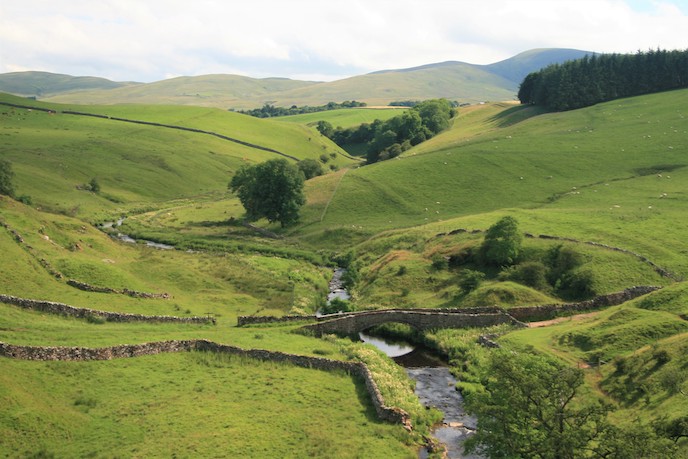
The Cost to Coast walk is a tough trail. There’s a lot of climbing and some steep descents, particularly in the Lakes, and you’ll be walking day after day. Like we said, if you’re a regular, reasonably fit hill walker you can start booking that ticket to St Bees. If not, you'll need to be prepared to put in some training. You can make the trail easier by staying in B&Bs along the route and using a baggage handling service to carry most of your gear. If you’re hardcore you can make it more of a challenge by camping and carrying your own stuff.
The time you take to walk the path will have an impact too – slogging the Coast to Coast out in ten days will need a higher level of fitness than walking it over a leisurely three weeks.
During my walk I met a group of Australians who were stretching their Coast to Coast walk out over three weeks, taking frequent days off so they could explore, which sounds ideal if you have the time.
Most people walk the Coast to Coast over 14 or 15 days. It's possible to do it faster, but you will be walking long distances each day so you'll need to be a fit and experienced hiker. Taking a little extra time will make your experience much more comfortable and gives you a chance to explore and really get into it.
With a schedule of 14 days you'll still face some pretty long jaunts. If you're worried about your ability to keep going day after day it might be an idea to build in at least one rest day. You could stop anywhere along the route, but it makes sense to choose somewhere with a bit going on. The most popular places are;
A busy little gem of a village. Proper old school England. It's full of tourists but lots to see, including the Wordsworth family graves and the lake. There are shops, cafes and the gingerbread is to die for.
An attractive town with plenty of facilities and shops, plus the opportunity to ride on the famous Settle-Carlisle train line.
Lots of history to explore, and loads of cafes to sit and watch the world go by..
Deciding how far to walk each day will depend on your preference, the time you have available, your fitness levels, and what vibe you like on your walking holidays. A typical 14-day schedule without a rest day looks like this;
The adventure begins! The Coast to Coast walk throws you in at the deep end with a climb onto St Bees Head before following the cliffs to the lighthouse. You’ll turn inland to walk through typical Cumbrian villages before tackling the first steep climb – Dent Hill.
If you’re lucky there’s a cracking view of the Lakes, Scotland and the Isle of Man from the top. A gentle walk through the hidden Nannycatch valley leads to the road to Ennerdale Bridge.
The Coast to Coast hugs the rocky shoreline of Ennerdale Water before following a forest track to the wonderfully isolated Black Sail Hut Youth Hostel. Route finding is not easy here.
You’ll need to pick the correct path which climbs Loft Beck – great views over Buttermere - before crossing Haystacks to the Honister Slate Mine and the walkers paradise that is Borrowdale.
The Coast to Coast climbs out of Borrowdale by way of Greenup Gill to Greenup Edge, with a small scramble up Lining Crag.
From here to Grasmere there’s a choice of routes; follow the ridge leading to Helm Crag with its distinctive summit rock formation known as The Howitzer, or take the gentler option down Far Easedale.
There’s a choice of two routes up to Grisedale Tarn but they’re both pretty steep. From the Tarn the main Coast to Coast walk follows the valley to Patterdale, but if you’re feeling more adventurous you have options.
If you’re feeling hardcore turn left to climb Helvellyn and test your mettle on Striding Edge or turn right for the slightly gentler option of St Sunday Crag for some great views over Ullswater.
An ascent of Kidsty Pike marks the highest point on the Coast to Coast route - if didn’t take any of yesterday’s high route options. After The Knott, you’ll need to stay alert as the path up to Kidsty is easily missed.
From the summit the route drops steeply to Haweswater, which you’ll follow to Burnbanks. Say a fond farewell to the Lakes as you walk through farmland to the impressive ruins of Shap Abbey.
The Coast to Coast leaves Shap to cross the M6, reaching moorland scarred with limestone outcrop and pavements. This is a delightfully isolated section, the bulk of the Pennines looming enticingly in the distance with every step.
Before reaching Kirkby Stephen, you’ll pass through Smardale, crossing the delightful Smardale Bridge. Look left shortly after for a cracking view of Smardale viaduct.
A shorter day but an interesting one, as the Coast to Coast climbs steeply to the rather spooky Nine Standards Rigg – the Standards are stone cairns of varying sizes but their original function has been lost.
The ground beyond the trig point is notoriously boggy and your choice of route will depend on the time of year. Flagstones have been laid over the worst of the bog but wet feet are inevitable – suck it up. Once you pass Ravenseat Farm, it’s practically downhill all the way to Keld – and you’re half way!
You’ve got a choice today; you can follow the River Swale to Reeth through attractive Dales villages with tea rooms or take the ‘high route’, which winds its way across desolate moors scarred by years of lead mining.
If you’re a history buff who enjoys poking around ruins and rusting machinery, take the high route - you’ll love this section.
A short and easier day; the Coast to Coast follows the Swale before climbing the Nuns Steps through woods from Marrick Priory.
Some easy field walking lets you kick back a little before passing through Marske and the climb to Applegarth Scar. Look for an impressive view over Richmond and the castle after leaving the woods – hopefully you’ll have time to explore.
Today is long but relatively easy. The Coast to Coast passes through the flat Vale of Mowbray to reach the Cleveland hills, and the mountains and moors are replaced by roads and fields.
Wainwright hated this stretch but there’s a certain rural charm to be found and the roads are quiet. Save a little stamina for the end – you’ll need it for the death-defying dash across all four lanes of the A19 to reach Ingleby Cross.
The Coast to Coast climbs steeply through Arncliffe Woods to join the Cleveland Way for a rollercoaster ride over the heather-clad Cleveland Hills.
From Carlton Bank look out for your first glimpse of the North Sea. Enjoy the views, plus an easy scramble through the strangely shaped Wainstones before taking the path down to the road at Clay Bank Top.
The day starts with a steep pull onto Urra Moor, where you’ll say goodbye to the Cleveland Way at Bloworth Crossing.
Look out for the carved standing stones – can you find the face and the hand? It’s easy walking all the way from here as you follow the course of the old railway to the Lion Inn at Blakey Ridge. There’s plenty of opportunity to admire the views into Farndale before a beer.
More moorland walking passes above Great Fryup Dale before taking the long, stony path down into Glaisdale.
Check out Beggars Bridge for a great photo opportunity on your way through. The Coast to Coast leaves the moors for woods, roads, and a track through Egton Manor to reach Grosmont. If you’ve time, book a ride on the steam train and check out the 1950s style waiting room.
It’s your last day, but your work’s not over yet – there’s an incredibly steep climb out of Grosmont, which your body won’t thank you for straight after breakfast. You’ll be able to get your breath back with a break in The Hermitage in Little Beck woods – a shelter hewn out of solid rock.
The small village of Hawsker’s your next destination but you’ll need to cross some particularly boggy ground first – and you were hoping to finish with dry feet! The Coast to Coast marches unapologetically through a caravan park before rejoining the Cleveland Way for a final march round the coast to Robin Hood’s Bay, and journey’s end.
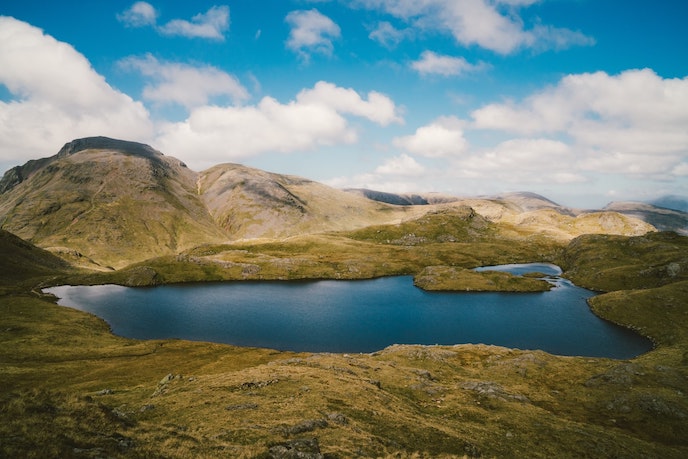
Yes, it's possible to break up the longer days if needed. Days 5 and 6 (when crossing over from the Lake District to the Yorkshire Dales) can be split into two or three days by staying in Bampton and/or Orton, both about 1½ miles off route. Orton also has its own chocolate factory… just saying.
Day 10 is the longest, when you'll cross the flat expanse of the Vale of Mowbray to reach the Cleveland Hills. This is often considered to be the boring stretch, but you'll be walking through farmland and along quiet roads so it's relatively easy going.
If 23 miles is too far, you could walk an extra five miles from Richmond to stay in Brompton-on-Swale, making day 10 a more manageable 18 miles. A regular bus service between Brompton and Richmond allows you to travel back to Richmond for the night if needed. Alternatively split it into two days by staying at Danby Wiske.
If you are short of time, it's possible to cut a day by walking from Rosthwaite to Patterdale (Lake District) in one stretch. Think carefully about this though. It's a tough, tiring day's walk. Keeping your days in the Lakes short gives you the option of tackling some of the higher route options on offer.
A better idea would be to walk either the 21½ miles from Keld to Richmond or the 22 miles from Ingleby Cross to Blakey in one day.
It’s entirely up to you and your fitness levels. Some people find a day off gives their body a chance to recover a little from the rigours of the trail and gives them more time to appreciate some of the places they pass along the way. Others find taking a rest day makes it more difficult for them to get back into the walking habit and they’d rather walk straight through.
Of course, your schedule will also be dictated by the amount of time you’re able to wrangle from work.
You might be forgiven for thinking the Coast to Coast walk is just one route - it's not. There are a few days when you're faced with a choice of a high route option;
Day 2 (Lake District) - instead of walking alongside Ennerdale Water to Black Sail Hut Youth Hostel and climbing onto Haystacks, the alternative trail climbs Red Pike and follows the ridge along High Stile and High Crag. This involves a lot more climbing and some steep descents but gives great views over Ennerdale Water and the Buttermere valley. Jam sarnie and a selfie anyone?
Day 3 (Lake District) - instead of descending into Grasmere by Easedale, the alternative trail traverses a ridge route to Helm Crag. This is undulating but not difficult and the views over Grasmere are worth it.
Day 4 (Lake District) - has three options. The original Coast to Coast walk follows the path down Grisedale Valley into Patterdale, but you can either turn left at Grisedale Tarn to climb Helvellyn and traverse Striding Edge or turn right to climb St Sunday Crag. If you haven't done Striding Edge before you're in for a treat - it's an iconic walk, with a well-deserved place on our list of best 9 mountains in the UK, but it's an exposed, narrow rocky ridge which needs care. Maybe not an option for vertigo sufferers!
If you've already done it, St Sunday Crag is worth considering for the views over Ullswater - (voted the best on the whole Coast to Coast walk route).
Day 7 (Yorkshire Dales) - there are three signposted routes from Kirkby Stephen over Nine Standards Rigg according to the time of year. The green route stays low and doesn't visit the Standards but is recommended in poor visibility.
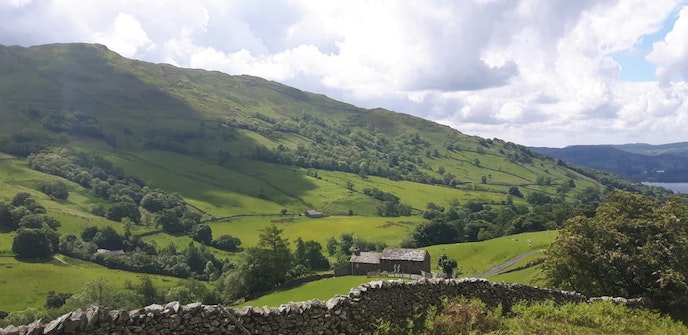
There's a choice of routes from Keld to Reeth, known as the ‘high level' and ‘low level' routes. The high-level route is Wainwright's original trail and does what it says on the tin. It climbs steeply onto the Yorkshire moors, and you'll pass the evocative remains of Swaledale's lead mining industry along the route. The lower route follows the River Swale through several villages and is considerably easier.
The route you choose will depend on the time you have, how you're feeling and visibility. It might put you off tackling one of the high route options in the Lakes if there's no view to reward your slog.
If you're short on time, could you split the Coast to Coast walk into two or three sections to complete chunks of it at a time? Good places to break it up are Shap, Kirkby Stephen, and Richmond (all Yorkshire Dales), which all have good public transport.
Another option if you're particularly time strapped is to complete the ‘highlights' of Wainwright's Coast to Coast walk. The sections from Ennerdale Bridge to Burnbanks (Lake District), Kirkby Stephen to Reeth (Yorkshire Dales) or Ingleby Cross to Grosmont (North York Moors) are seriously impressive parts of the trail and could be walked over a long weekend.
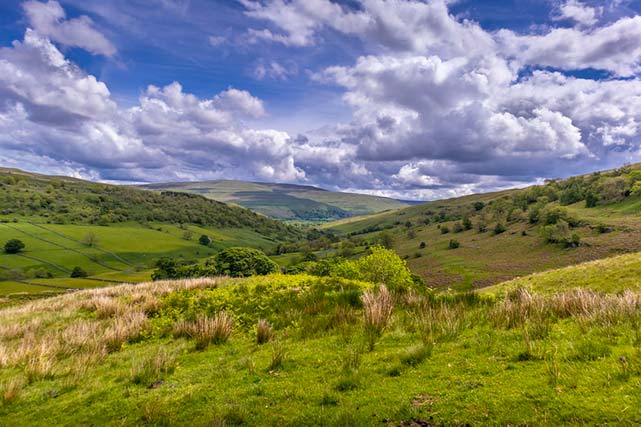
Most people walk the Coast to Coast west to east - the theory is you'll have the wind at your back throughout the route. Guidebooks tend to be written west to east, but some renegades choose to set off from the North Sea side at Robin Hood's Bay finishing up on the Irish Sea at St Bees. This saves the Lake District as a fitting climax, so is worth considering.
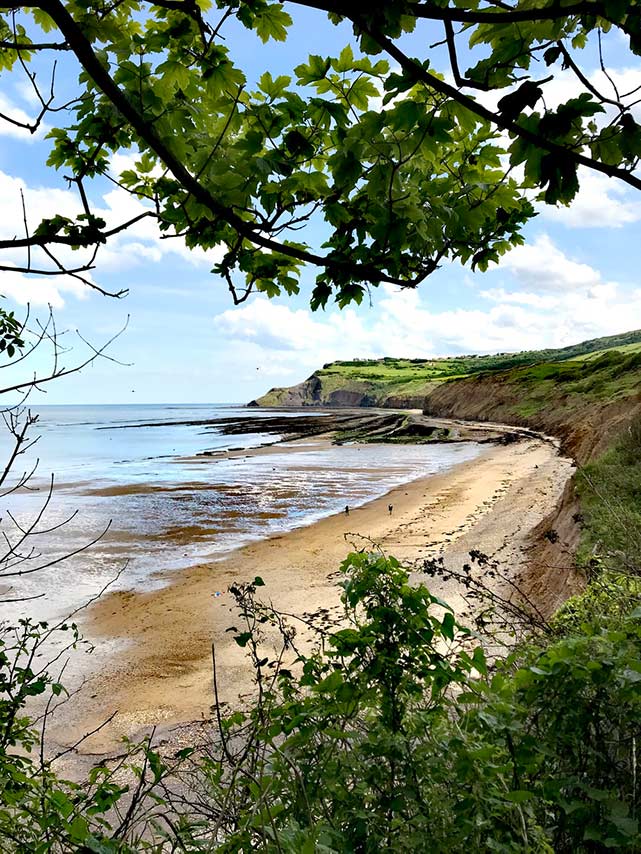
The best time to attempt the Coast to Coast walk is between late April and September. Days are longer and the weather is generally more settled. I say 'generally' as it's perfectly possible to experience a fortnight of rain in June - this is the UK after all!
There can be some surprisingly good weather in April, but days are shorter and there is a chance of snow on higher ground, especially in the Lake District.
July and August are the busiest times for National Parks due to school holidays in England. September is usually dry and a great time to experience Autumn colours, but the later you go the shorter the days will be.
If you're an experienced walker with the right kit (and know how to use it), a winter crossing of the Coast to Coast walk could be a real adventure. Bear in mind though that facilities may be closed so wild camping may be your only option for some nights on the trail.

The Coast to Coast walk is a very popular path and accommodation can be limited, especially in the summer months. There are three choices when booking your accommodation. Walk independently and book it yourself, use the services of a company to secure your accommodation for you or join a guided tour who will arrange everything, including a group to walk with each day.
Whichever option you choose depends on your own preferences and circumstances, but if you're booking your own accommodation you'll need to plan well in advance. If you're struggling to find accommodation, try neighbouring villages just off the Coast to Coast walk route.
The place you're staying may agree to collect you and drop you back on the trail next morning. Another top tip is to avoid starting your walk at the weekend. The majority of Coast to Coasters begin Saturday or Sunday, so they're all chasing accommodation for the same nights. School boy...
Camping along the way is the cheapest and most flexible. There are plenty of campsites on route, plus many farmers will also let you camp in their field for a small fee. You might even be able to get away with just turning up without a booking. If you do camp, you'll need to lug a lot more gear, unless you take a strong mate. Try to make sure your gear is as lightweight as possible - our article on Best Tent Brands and Shelters will help you pick your ideal home from home.
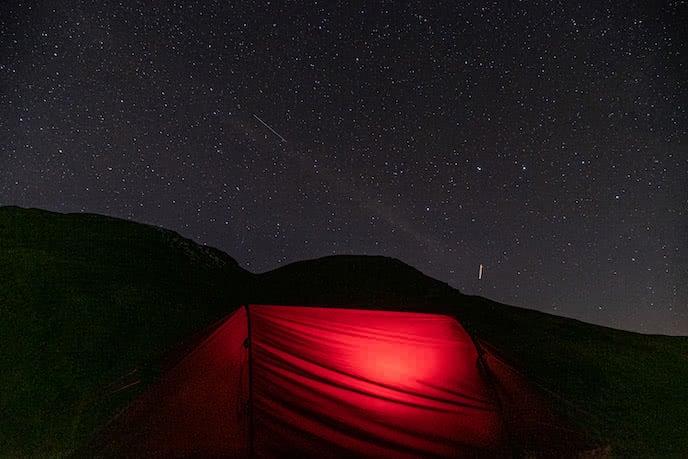
Next up the cost scale are Youth Hostels and Bunk Barns. These are generally cheap, but a good night's sleep may be variable if you end up with a snorer in the dorm. And as we all know, there's always a snorer. A few extra drinks before bed might just do the job and is cheaper than a hotel.
There are fewer Youth Hostels on the second half of the route, so you'll need to think about other options.
Bed and breakfast/guest houses and hotels are the most expensive option (especially in the Lake District) but offer a greater deal of comfort at the end of a tough day's walking. There is something to be said for a warm shower and a comfy bed. There's also the lure of a fully cooked breakfast to set you up nicely for the day. Hash browns and beans all round!
Doreen Whitehead's online guide is a good starting point for finding accommodation for your adventure from St Bees to Robin Hood's Bay. You can also buy a printed version which is updated regularly.
Accommodation can also be scarce between Ingleby Cross and Glaisdale, although there are B&Bs who will collect you from Clay Bank Top and drop you back on the trail next morning. If you're able to push further, the Lion Inn at Blakey in the middle of the Yorkshire Moors is an oasis for tired walkers.
Stretches that may cause problems are Ennerdale to Borrowdale (Lake District), Keld to Reeth (Yorkshire Dales) if you take the high route, and the last day if you're not staying at Grosmont (North York Moors).
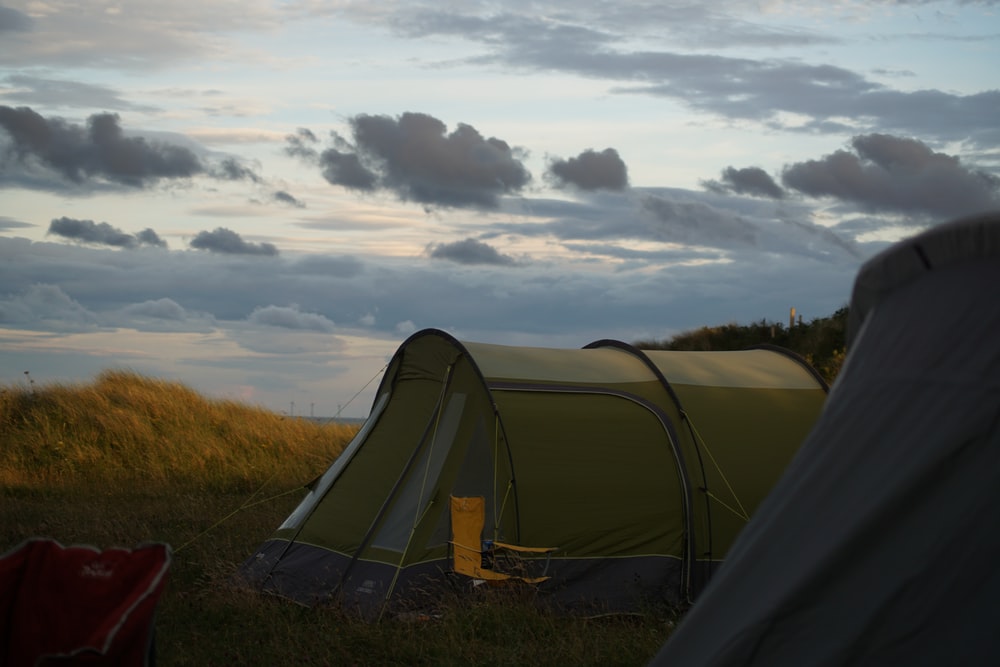
Some choose to wild camp the entire trail and this can make for a more immersive experience. This is not technically legal in the UK, but generally speaking, wild camping is tolerated as long as you pitch late, leave early and leave no trace. More on this in our ultimate guide to wild camping.
Most people mix it up with some campsites. You’re bound to get heavy rain at least one night and putting up a wet tent then climbing into a soggy sleeping bag can sap the morale of even the toughest hiker. Campsites often have drying facilities and options for charging electronic devices.
We think the experience is all the more special when wild camping so would nudge you to at least consider sleeping out but realise it isn't for everyone. Putting up a tent in a howling gale and driving rain after several hours walking isn't everyone's idea of fun though!
You should be able to get a meal each evening as you'll be staying in towns or villages along the way who are well used to the unreasonably large appetites of hungry hikers on their walking holidays. If you're staying in Keld, you'll need to book a table at Keld Lodge or Butt House as there are no other options in the village.
You'll be able to buy lunch and supplies at most of the larger villages and towns. Most B&Bs will be happy to sell you packed lunches if you ask them the night before. Sadly the Coast to Coast doesn’t pass many cafes or pubs during the day. So when you do encounter one you’ll want to take full advantage. If you’re walking from Borrowdale to Patterdale in one stretch then a detour to the honeypots of Grasmere could be on the agenda.
A short diversion to The George Hotel at Orton is a possibility between Shap and Kirkby Stephen and between Kirkby Stephen to Keld you’ll pass Ravenseat Farm. This is the home of Yorkshire Shepherdess Amanda Owen and cream teas are often served, but it’s a good idea to check her website before getting your hopes up.
Choose the lower route between Keld and Reeth if you need refreshment stops as there’s nothing on the higher route. The White Swan at Danby Whiske is a welcome halting point during the long slog through the Vale of Mowbray; the owners know just what walkers need and offer accommodation as well as selling some basic essentials such as Compeed.
Look out for the service station to your left just before the mad dash over the A19 to Ingleby Arncliffe if supplies are running low.
The quirky Lord Stones café at Carlton Bank is a great spot for a break from the switchback trail over the Cleveland Hills and you’ll be ready to wet your whistle at the Lion Inn on Blakey Ridge after marching along the old railway which crosses Urra Moor.
Glaisdale has a pub which should sustain you until you reach Grosmont and its good selection of cafes. Here’s a tip - try the Grosmont tart.
The Coast to Coast walk also plays host to a special kind of trail magic known as honesty boxes. These offer anything from chocolate bars and flapjack to energy drinks for a small fee so make sure you have some loose change on you. Some of the churches along the route have facilities for making a hot drink for a donation but be aware that some churches may be shut due to Covid.
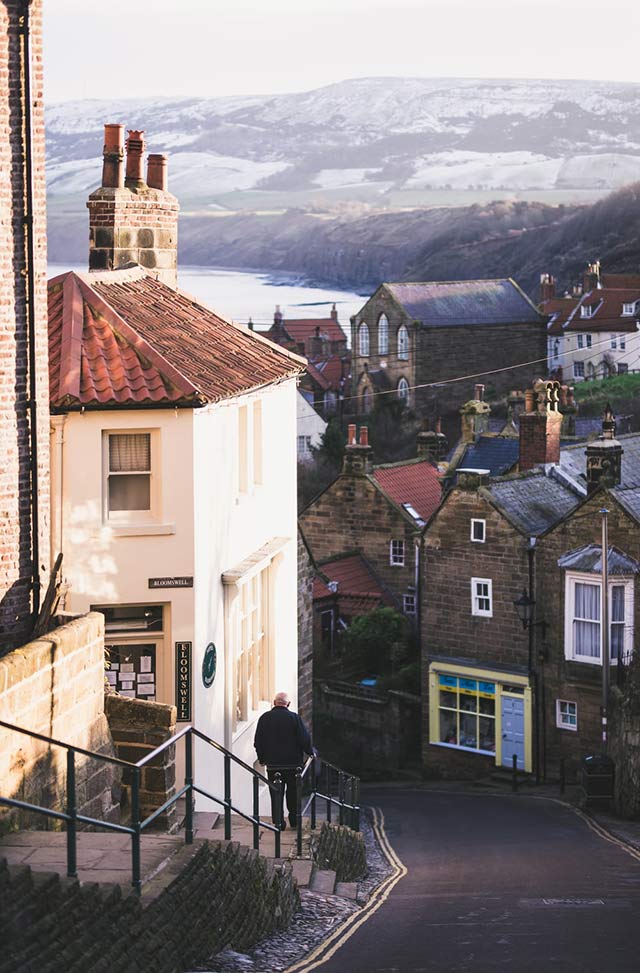
St Bees has a train station, which is accessed from Carlisle or Barrow-in-Furness. Unfortunately, Robin Hood's Bay has lost its station, but there are regular buses to Whitby and Scarborough where trains can be caught. National Express coaches have stops at Penrith, Scarborough and Whitby with local bus services serving St Bees and Robin Hood's Bay.
Alternatively, take advantage of the walking holiday services offered by the Coast to Coast Packhorse. They offer secure parking at Kirkby Stephen (almost half-way) with a bus shuttle service to St Bees and back to your car from Robin Hood's Bay at the end of your walk. The bus leaves Kirkby Stephen for St Bees at 8am each morning and leaves Robin Hood's Bay for the return journey at 4pm daily.
You can access your car as you pass through, which gives you the advantage of being able to drop off or pick up spare gear. Don't breathe in too deeply on the drive home if you've dumped your soggy socks.
This means you'd need to reach Robin Hood's Bay by 4pm on your final day's walking. If this feels a bit tight, Intake Farm at Little Beck offers accommodation and an evening meal. This reduces the last day to 12 miles and means you won't have to tackle the climb out of Grosmont first thing in the morning!
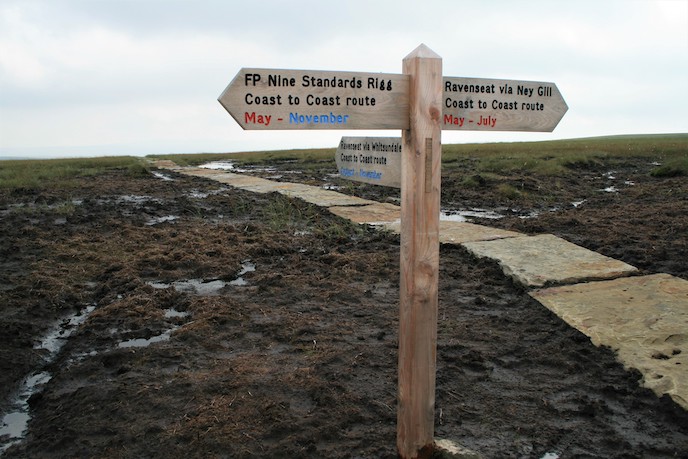
What you take with you will depend on whether you will be carrying your own gear or taking advantage of the baggage handling services offered by walking holiday transport specialists Sherpa Van, Coast to Coast Packhorse or Brigantes.
They will transport a main bag for you which leaves you free to walk the Coast to Coast with just a day sack. This is more costly but does make the walking easier and it's a bonus knowing you have spare clothes and maybe a good book or two.
If you're carrying all your gear, you'll need to be ruthless with your packing. It's tempting to add stuff thinking you won't notice the weight, but those ounces all add up to a potentially spine-crushing load. You'll need to forgo some of the luxuries and be prepared to wear the same outfit several days in a row. It's not a time to worry about BO - it's not an adventure until you're at least a bit stinky.
There are a few things you shouldn't skimp on. Here's an idea of a minimal Coast to Coast kit list:
Keep clothes and electronic devices inside waterproof dry bags and use a waterproof rucksack cover to keep everything dry in heavy rain. A soggy sleeping bag isn't much fun.
It's worth noting that some parts of the route are notoriously bad for phone and Wi-fi reception. A spot device might be a bit overkill but if you have one, why not.
Make sure you're carrying details for your accommodation so you can call them if you're likely to be delayed as you might have signal to ring but not to search the interwebs for the number.
Oh and I should mention tradition dictates that you carry a pebble with you from the coast of St Bees to throw into the North Sea at Robin Hood's Bay.
What should I pack for the Coast to Coast Walk?
The Coast to Coast walk is sporadically signposted. Interestingly the only place you won't see any signs is the Lake District, presumably as it's not actually an official route despite its popularity. Signposts are useful in letting you know that you're going the right way, but they can't be relied on. You'll need a guidebook, maps, a compass and phone to avoid getting lost.
A quick note on phones for navigation - they are very convenient but it's always a good idea to bring a paper back up - Ordnance Survey maps or Harvey maps are both great options. Paper doesn't run out of batteries. It also feels more of an adventure using a proper map. Unlike some countries, England is very well mapped so take advantage.
If you're not sure how to use a compass, learn before you start your walk. There are some excellent online tutorials or find an outdoors company offering navigation courses. It's a useful skill to learn and could even save your life.
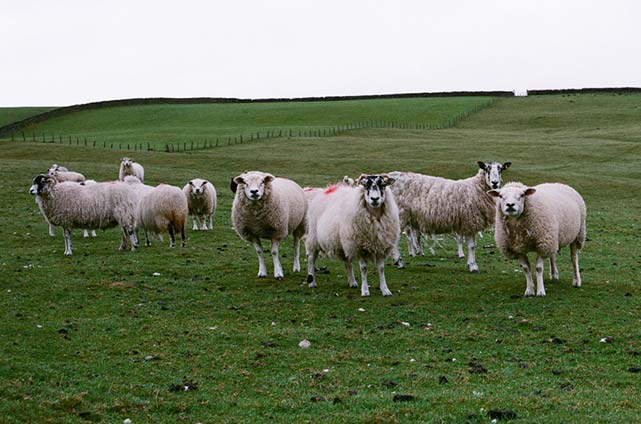
Some of the best Coast to Coast walk guidebooks are;
Trailblazer’s Coast to Coast Guide - the most popular choice, it contains detailed, hand-drawn maps and route details, information on facilities and local transport networks.
Cicerone’s Walking the Coast to Coast guide comes complete with a separate booklet containing OS mapping, route details, information on flora and fauna plus accommodation.
Wainwright’s original pictorial guide of the route has been revised and updated by Chris Jesty, who has retained his famous hand-drawn maps and sketches.
You’ll need to take a map as well, or at least a GPS device as a back-up. Harvey’s have produced two 1:40,000 maps covering the west and east sections of the Coast to Coast walk, which would save you carrying a whole stack of maps.
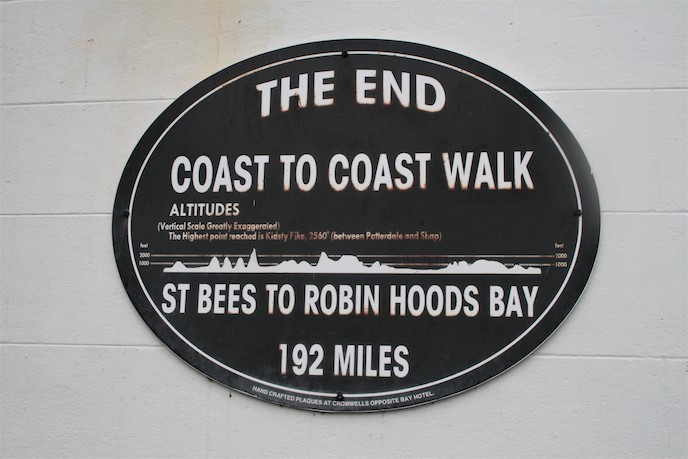
Get out there whatever the weather. Get used to being wet and miserable - you might not have the option of sitting out a wet day in the Lakes.
Your training walks are ideal for testing kit and breaking in those boots. It’s a good idea to do a dress rehearsal, ideally over a fairly long distance route. Walk with your rucksack packed with everything you’re going to take. You’ll feel ridiculously overdressed if you’re walking local trails, but who cares? It’s a great way to make sure everything’s comfortable before you set off.
A couple of weeks before you go, taper your training to give your body time to repair itself and gather strength for the challenge ahead.
Last but not least, enjoy and savour your Coast to Coast walk. It will be a truly special experience, and there is a camaraderie that seems to exist on no other trail in quite the same way. Once home don’t be surprised to find yourself wanting to do it again… and again.
Here's a great intro to get you inspired for walking the Coast to Coast
Not sure if wild camping along the way is for you? Or maybe you just want to learn a bit more about it before you try it out. Our wild camping guide has everything you could want to know and more.
Or if you like the idea of joining a (socially distanced) group then we'd love to have you join on one of our wild camping trips like wild camping Snowdonia.